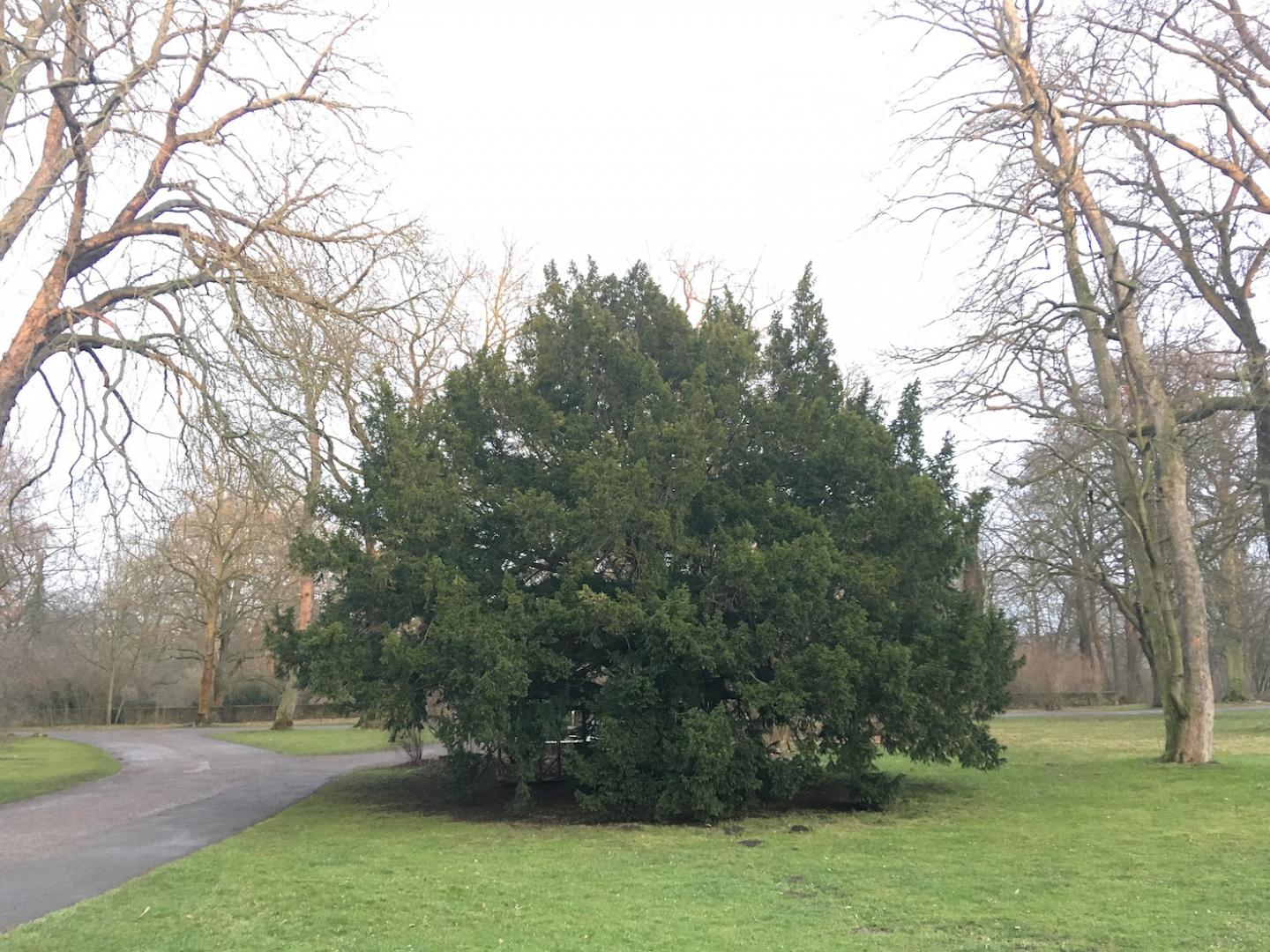European yew Taxus baccata
THE European yew is one of only three native British conifers along with Scots pine and juniper. The yew can grow to more than 25m, while the leaves are evergreen, arranged spirally and twisted into two ranks, so that they appear alternate.
The trees are of two sexes (dioecious), but sometimes branches change sex, producing “flowers” of the opposite sex.
In conifers the sexual organs are in small cones, not flowers, and male plants bear male cones which burst open to shed their copious pollen in early spring.
The female’s seeds (poisonous) are surrounded by fleshy arils (not poisonous) which superficially resemble berries.
Yew seeds germinate readily, and the trees also clone themselves vegetatively, so it is often impossible to tell whether they are native or planted or the descendants of planting.
Individual yew trees are widespread, occurring on a wide range of soils, especially neutral to alkaline. One remarkable local individual hangs precariously to the edge above High Force, the roots of one side grasping the cliff whilst the those on the other are exposed to the void.
Yew woodlands are less common and, in the UK, mostly confined to the chalk of the South and North Downs in south-east England. An exception to this is Castle Eden Dene, on the County Durham coast, which is home to England’s most northerly natural yew woodland.
Yew is known for its toxicity and is reputed to have spiritual powers. It is variously known as a sacred tree or a symbol of death probably because it is often found in graveyards.
Theories abound as to why this should be. Some say that it was worshipped for its longevity, others that it thrived on corpses.
Since the oldest yew trees in churchyards predate Christianity, their presence there might symbolise some form of pagan resurrection and immortality of the soul.
There are also plenty of much more pragmatic suggestions: yew wood is excellent for making longbows, yet it’s toxic, so planting in sheltered churchyards prevented grazing animals being poisoned by it and provided an effective windbreak.
In addition, yews are evergreen and cast a very deep shade, so that almost nothing grows underneath them.
Yews are also known for their longevity with the estimated age of many veteran trees exceeding 1,000 years.
The list of such trees includes the “Fraternal Four of Borrowdale” made famous by Wordsworth in his poem the Yews. Although only a fraternal three remain today, the oldest is thought to be more than 1,500 years old. It is thought provoking to consider that more than 60 human generations have passed since these trees were seedlings.
Richard Friend is a member of Upper Teesdale Botany Group
ADVERTISEMENT
Flora and fauna: Veteran wonders were considered sacred
ADVERTISEMENT
ADVERTISEMENT
ADVERTISEMENT







